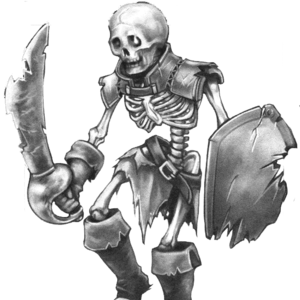
Skeleton (Undead)
CBUB Wins: 0
CBUB Losses: 0
CBUB Ties: 0
Win Percentage: 0%
Added by: Culwych1
Read more about Skeleton (Undead) at: Wikipedia
Official Site: Public Domain
Animated human skeletons have been used as a personification of death in Western culture since the Middle Ages, a personification perhaps influenced by the valley of the dry bones in the Book of Ezekiel. The Grim Reaper is often depicted as a hooded skeleton holding a scythe (and occasionally an hourglass), which has been attributed to Hans Holbein the Younger (1538). Death as one of the biblical horsemen of the Apocalypse has been depicted as a skeleton riding a horse. The Triumph of Death is a 1562 painting by Pieter Bruegel the Elder depicting an army of skeletons raiding a town and slaughtering its occupants.
"The Boy Who Wanted the Willies" is a Brothers Grimm fairy tale in which a boy named Hans joins a circle of dancing skeletons.
In Japanese folklore, Mekurabe are rolling skulls with eyeballs who menace Taira no Kiyomori.
Figurines and images of skeletons doing routine things are common in Mexico's Day of the Dead celebration, where skull symbolize life and their familiar circumstances invite levity. Highly-decorated sugar-skull candy has become one the most recognizable elements of the celebrations.
CBUB Match Record:
No Regular Play Records Available
No Fantasy Draft Records Available
